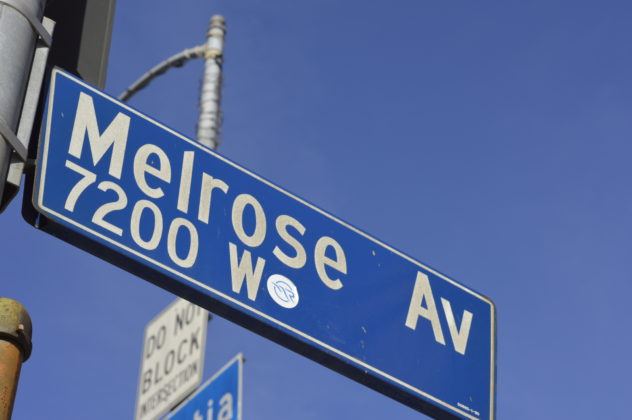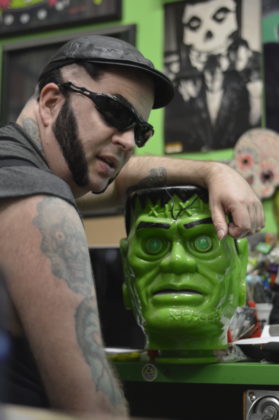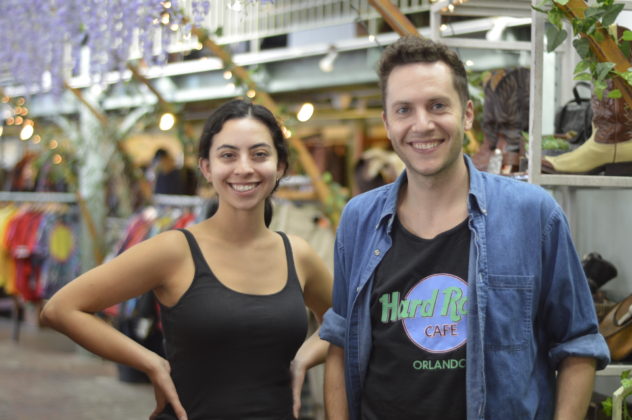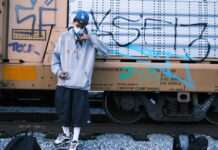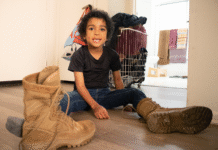Psychedelic threads and suggestive advertisements bulge like beer bellies on the Fourth of July across 1.3 miles.
If one isn’t familiar with L.A. culture, some may mistake peacocking locals for models and Dr. Seuss inspired storefronts for film sets.
In reality, it is the boulevard between Beverly Hills and Silverlake that is the Los Angeles epicenter of shopping and expression – the Melrose Fashion District.
“There’s really something here for everybody,” Otis College lecturer Bita Rad said. “There’s a different part of town for each type of person.”
With more than 300 stores on this stretch of land, that isn’t a far-fetched idea. Whether it is vintage, punk, European, streetwear, athletic or a combination, the stores across the avenue act as a library for expressive garments.
The Melrose of today holds its roots in the punk scene of the mid-1980s that birthed many small shops with hard to find vintage wear and styles.
Wasteland and Posers, popular stores on Melrose, represent a sense of novelty fashion.
Stores on the eastern section of Melrose still echo a traditional boutique aesthetic by capturing distinct markets, such as Monster A-Go-Go, with their horror-themed products.
Licensed apparel featuring iconic horror movie characters such as Elvira and martians from “Mars Attacks.”
“We thought, let’s see what we can put together ourselves because we already knew we had quite a good eye for things that sold,” said Chief Designer Ash Ghoulmore of Monster A-Go-Go.
Originally from Scotland, he and his wife moved to L.A. several years ago to open their Melrose location.
A few blocks down, Rich & Rotten CEO and store owner Hamed Jalaly describes his product as “high-end streetwear with a message.”
Originally from Iran, Jalaly began the brand in late 2012. The Melrose branch is evenly spread, with clothing displayed and hung across two sides.
Although Melrose is thought of as high-end shopping destination, Jalaly said wealth doesn’t make you rich.
“Rich is not necessarily about money or materialistic things, it’s more about the spirit,” he said. “Rotten comes from the journey, the trials and tribulations that one might have to endure along the way.”
In the middle of Melrose sits American Rebel, a vintage store that’s stood through several name changes, but has always sold secondhand clothing.
Store leader Andrew Goetten describes the garments sold here as “high-end vintage.”
They sell 1960s-70s dresses, military and vintage band t-shirts.
Among its sister stores, American Vintage stands out from minor amounts of reconstructed material and few brand names.
People from all walks of life frequent the shopping destination.
“They’re cool. They’re interesting to say the least, but everyone’s nice, easy to get along with and they know what they want,” said Mamadou Bah from Round Two Hollywood. “The majority of the people that come in here know exactly what they want to buy.”
Events away from Melrose have proven to expand the reach for most of these stores that aren’t as recognizable as their luxury brand counterparts.
Be it pop-up shops, wholesales or word-of-mouth via social media, it gives these shops another medium to garner attention and further cast trends beyond the avenue. Some include ComplexCon, Son Of Monsterpalooza and Budland.
At the rate of visitors and aspiring entrepreneurs who will continue to roam the avenue, there seems to be a nonstop growth of its influence.
“I think it’s a really good resource for people in the fashion industry to go to,” Rad said. “It’s a one-stop place where you can go both mid-tier and high-end luxury shopping.”
Ghoulmore embodies the essence of Melrose with a simple saying.
“Every day is an adventure,” Ghoulmore said. “You don’t know who’s gonna come through the door.”

